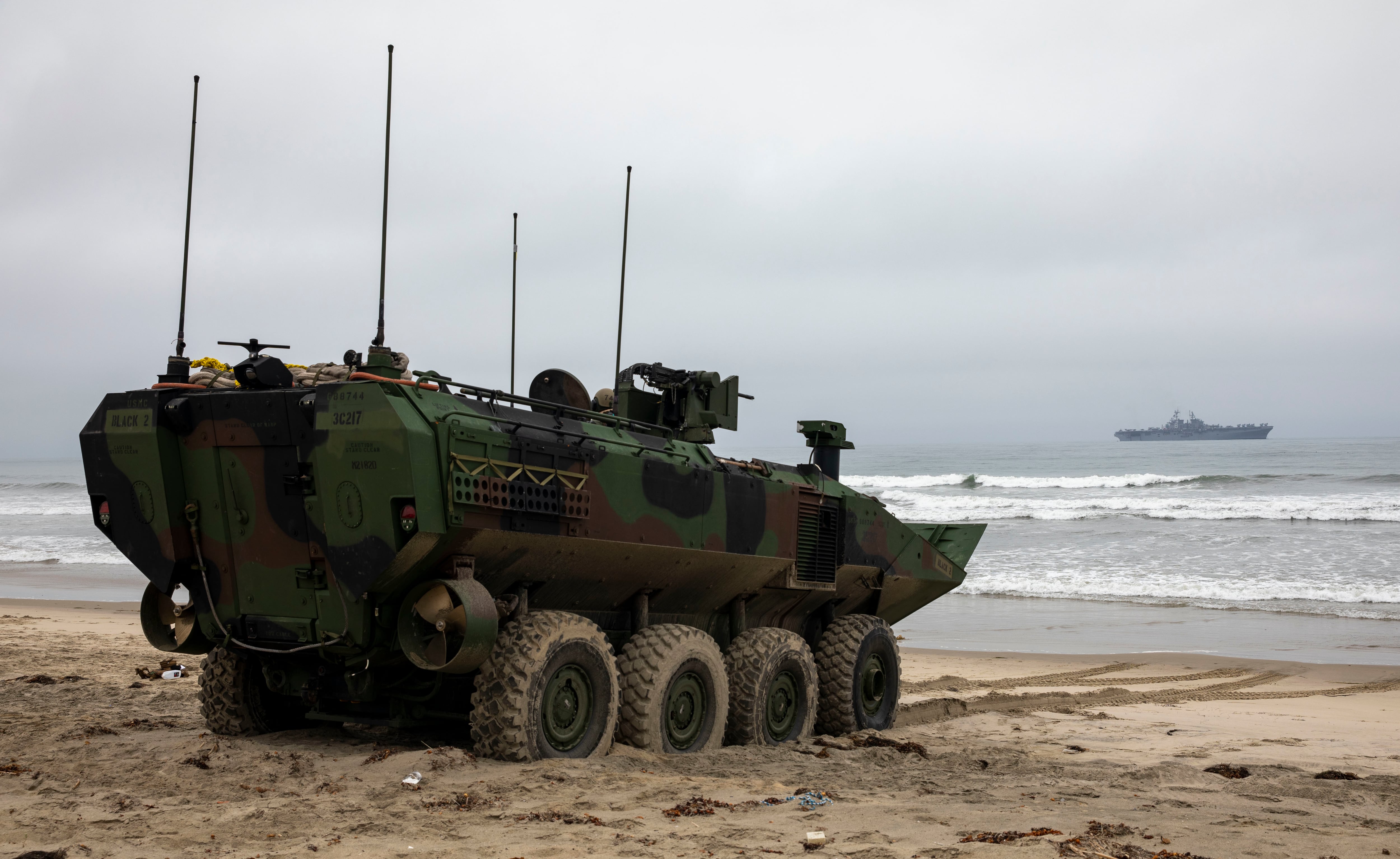NATIONAL HARBOR, Maryland — Nearly 200 of the amphibious combat vehicle’s basic variant already have been fielded to the Marine Corps, and several other variants are coming soon.
The amphibious combat vehicle can transport Marines from ship to shore or shore to shore and then maneuver on land thanks to its wheels. The first shipment of the main variant, the personnel carrier, arrived at the fleet in November 2020, as Marine Corps Times previously reported.
BAE Systems already has delivered more than 190 personnel carrier variants to the Corps, Mark Brinkman, program manager for design and development of the vehicle for the defense company, told reporters Monday during a briefing at the Sea-Air-Space conference in National Harbor, Maryland.
The company expects to hit the 200 milestone by the end of April, he said during the briefing, which took place inside a vehicle on the exhibition floor.
RELATED

BAE Systems is developing and producing three more variants of the vehicle that are intended for assault amphibian battalions, according to Brinkman.
Brinkman said a command and control variant, outfitted with six workstations and computers, is slated for delivery in late fall.
There also is a variant with a 30 mm medium-caliber cannon in the works. The design work on the variant is complete, and BAE Systems plans to send three production representative test vehicles to the Marine Corps in early 2024, according to Brinkman.
A recovery variant is about a year behind the schedule of the cannon variant, with three of those vehicles scheduled to be sent to the Corps for testing in early 2025, Brinkman said. That variant is meant to offer field maintenance, recovery and repair capabilities, according to the BAE Systems website.
BAE Systems also is competing in the Marine advanced reconnaissance vehicle program to provide a vehicle equipped with command, control, communications, computer and unmanned aerial system (C4/UAS) capabilities.
The other two vendors, Textron and General Dynamics Land Systems, have submitted prototypes designed specifically for the program. But BAE Systems has added a C4/UAS system onto its existing amphibious combat vehicle.
The Marine Corps launched testing of the competing prototypes in early January, Marine Corps Times previously reported.
Brinkman said BAE Systems recently demonstrated its reconnaissance-focused variant for senior Marine Corps leadership.
“I enjoyed all the positive feedback and positive body language,” he said.
BAE Systems also is researching a potential logistics variant of the vehicle, Brinkman said.
The amphibious combat vehicle is the replacement for the amphibious assault vehicle, which had been in service since the early 1970s and in 2020 was involved in a high-profile sinking that killed eight Marines and one sailor.
Another challenge for the Marine Corps in fielding the amphibious combat vehicle has been the multiple rollovers that occurred during training in the surf last year. Berger attributed those mishaps largely to inadequate training of vehicle operators.
The Marine commandant, Gen. David Berger, told senators March 28 that the Corps had encountered “a few notable challenges” with the amphibious combat vehicle, including mechanical issues with the shock absorbers and central tire inflation system.
Berger noted that the Marine Corps was working with BAE Systems to resolve them.
When asked Monday about a timeline for fixing the mechanical issues, Brinkman said, “What I can say is BAE is committed to providing quality and safe vehicles to the Marine Corps. And we work with our partners every day to try to solve any questions they may have and support them in any way we can.”
Irene Loewenson is a staff reporter for Marine Corps Times. She joined Military Times as an editorial fellow in August 2022. She is a graduate of Williams College, where she was the editor-in-chief of the student newspaper.




